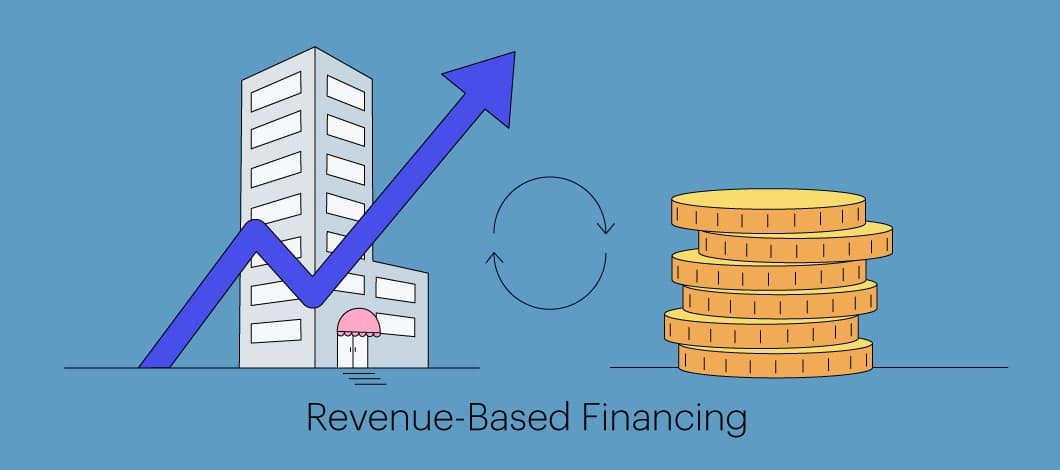
👆Play Your Private Vodeo👆
Securing revenue-based financing involves several steps. First, assess your business’s health and funding needs. Then, research potential investors or platforms specializing in revenue-based funding. Prepare a strong business plan, financial statements, and projections. Negotiate terms with investors, including the amount, revenue-sharing percentage, and repayment structure. Finally, have a lawyer review the agreement before finalizing the deal.
Maximizing Revenue with Financing Strategies
Financing strategies can be a powerful tool to boost your revenue. By offering financing options, you make your products or services more accessible to a wider range of customers, especially those who might not be able to afford a large upfront cost. This can lead to increased sales and conversions. Additionally, financing plans can encourage larger purchases, further increasing your revenue. However, it’s important to choose financing options that fit your business model and carefully evaluate the associated costs and risks.
Understanding Revenue-Based Financing Models
Revenue-based financing (RBF) is an alternative funding option for businesses that provides capital in exchange for a share of future sales. Investors get a percentage of your revenue until a predetermined amount, typically a multiple of the investment, is repaid. This lets you grow without giving up equity or needing collateral. It’s ideal for startups with predictable revenue streams and aligns your success with the investor’s.
Utilizing Revenue for Business Financing
Utilizing revenue for business financing refers to a strategy where a company raises capital by leveraging its future sales. Investors provide funds upfront in exchange for a percentage of the company’s ongoing revenue. This approach is attractive because it doesn’t require giving up ownership (equity) or securing loans with collateral. It’s ideal for businesses with predictable revenue streams and allows repayments to scale with sales fluctuations. This financing option is known as revenue-based financing.
Boosting Cash Flow with Revenue Financing
Revenue financing offers a cash flow boost for businesses by leveraging their future sales. Instead of traditional loans or equity investment, a company sells a portion of its future revenue stream to a financier in exchange for immediate capital. This frees up cash for operations, growth initiatives, or managing temporary dips in income. It’s ideal for businesses with a strong sales track record and growth potential, but may come with higher fees than conventional loans.
5 Ways Revenue-Based Financing Can Benefit Your Business
Revenue-based financing (RBF) offers several advantages for businesses, especially those in early stages. Unlike traditional loans, RBF doesn’t require surrendering equity, allowing you to maintain control. Payments are flexible, scaling with your revenue, so there’s less pressure during slow periods. With RBF, investors are incentivized by your growth, creating a partnership focused on shared success. Finally, RBF can be a quicker funding option compared to lengthy traditional processes.
Top Revenue-Based Financing Options for Startups
Revenue-based financing (RBF) is a great way for startups to access capital without giving up equity. Top RBF options include companies like Clearco and Booste, which provide funding based on a percentage of your future revenue. This is ideal for startups with strong traction and predictable sales. These firms can get you funded quickly and with flexible repayment terms. Be sure to compare rates and terms to find the best fit for your business.
The Pros and Cons of Revenue-Based Financing
Revenue-based financing (RBF) offers a unique path for startups to access capital. On the plus side, it provides flexibility as repayments are tied to your monthly revenue, increasing or decreasing with your sales. This aligns your success with the investor’s and avoids the pressure of fixed loan payments. RBF can also be faster to secure than traditional funding and doesn’t require giving up equity in your company.
However, there are drawbacks to consider. RBF funders typically offer smaller amounts of capital compared to other options. Additionally, the cost of RBF can be higher than debt financing since repayments are based on a percentage of your revenue, potentially limiting your cash flow during periods of high growth. Ultimately, RBF can be a good fit for startups with predictable revenue streams who value maintaining control of their business.
7 Tips for Successfully Obtaining Revenue Financing
Absolutely! Here are 7 tips for securing revenue financing:
- Solid Financials: Prepare financial statements that showcase profitability, a healthy growth trajectory, and a clear path to future revenue streams.
- Compelling Business Plan: Craft a well-defined plan outlining your business model, target market, competitive advantage, and how the funding will accelerate revenue generation.
- Strong Credit History: Demonstrate a good credit score and responsible financial management to boost confidence in your ability to repay the financing.
- Recurring Revenue Model: Revenue financing thrives on predictable income streams. Highlight recurring revenue sources like subscriptions or long-term contracts.
- Experienced Team: Showcase a competent team with a proven track record in scaling businesses.
- Targeted Approach: Research and identify revenue-based lenders or investors who align with your industry and funding needs.
- Clear Communication: Present your business story with clarity and enthusiasm, effectively communicating the value proposition and potential return on investment.
What Are the Requirements for Revenue-Based Financing?
Revenue-based financing doesn’t have strict requirements like traditional loans or venture capital. The main thing you’ll need is a track record of revenue and a promising forecast. Investors will assess your business’s potential to grow and generate future sales. They’ll want to see healthy financials and a clear path to profitability. If you can demonstrate those things, revenue-based financing can be a good option to secure funding without giving up equity or taking on debt.
How Does Revenue-Based Financing Differ from Traditional Loans?
Revenue-based financing and traditional loans differ in how repayments are structured and how ownership is affected. Traditional loans come with a fixed repayment amount, regardless of your business’s income. Revenue-based financing, however, ties repayments to a percentage of your revenue, meaning you pay more during prosperous times and less during slow periods. Additionally, traditional loans may require collateral and can dilute your ownership stake by giving lenders a say in your company. Revenue-based financing doesn’t require collateral and allows you to retain full control of your business.
Is Revenue Financing a Good Option for Small Businesses?
Revenue-based financing can be a good option for small businesses, especially those with a consistent revenue stream but lacking a strong credit history or wanting to avoid giving up equity. It offers flexible repayment terms tied to sales and can be easier to obtain than traditional loans. However, it’s important to consider the costs, which are often higher than interest rates on loans, and ensure your business can handle potential fluctuations in sales.
What Are the Risks Associated with Revenue-Based Financing?
Revenue-based financing (RBF) can be a good fit for startups, but it does come with some drawbacks. A key risk is the variable repayment amounts. Unlike a fixed loan payment, RBF repayments are tied to your revenue, so fluctuations can make budgeting tricky. Additionally, RBF funders often charge higher effective interest rates than traditional loans. Finally, RBF deals may be smaller than other financing options and can impact your ability to raise funds later.
Table of Contents
How Can Revenue Financing Help Businesses Grow?
Revenue-based financing offers a unique path to growth for businesses by aligning repayments with income. Unlike fixed loans, businesses repay investors a percentage of their monthly revenue. This flexibility allows them to grow without financial strain during slow periods. Additionally, revenue-based financing doesn’t require giving up ownership, like equity financing, which can be appealing to founders who want to maintain control. This makes it a suitable option for startups and growing businesses seeking capital to fuel their expansion.



